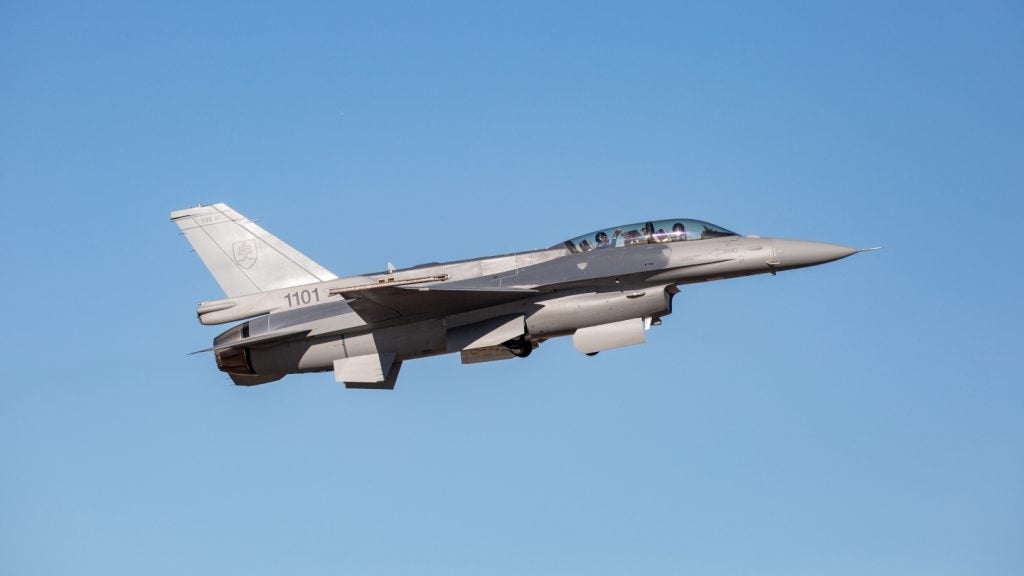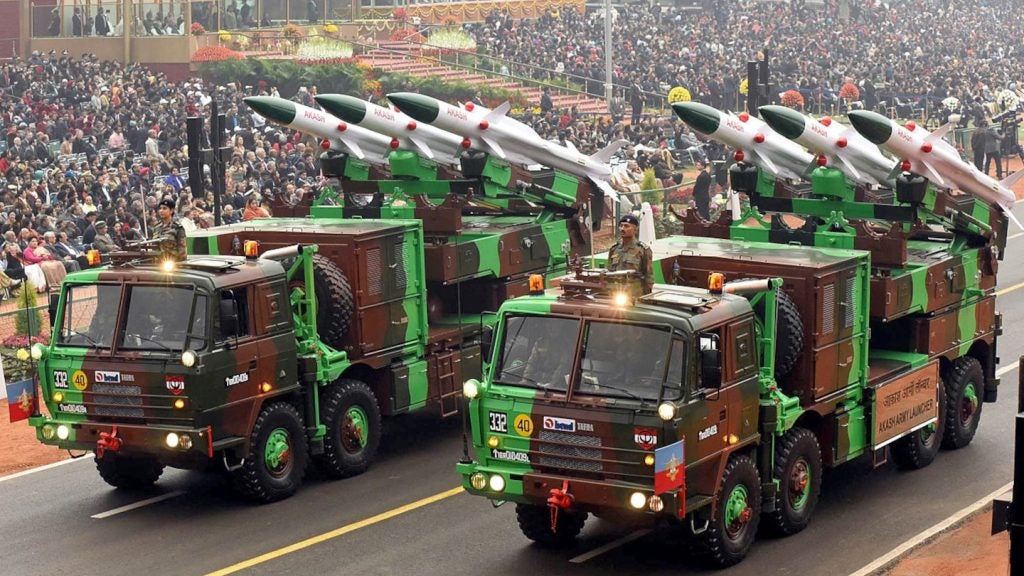The F-5 Tiger II, a single-seat twin-engined supersonic fighter aircraft, was developed by Northrop Grumman, US. The aircraft took its maiden flight on 11 August 1972 and entered into service in 1975. It is the upgraded version of the F-5A Freedom fighter aircraft developed by Northrop Grumman in early 1959.
The production of F-5A-21 began in 1970 by Northrop Grumman and at the same time the aircraft was renamed ‘F-5E Tiger II’. The avionics of the F-5E Tiger II are more sophisticated compared to the earlier version F-5A aircraft. It rolled out from production in 1987 and since then has undergone various upgrades to compete with changing combat environments.
The aircraft costs are low and can be easily maintained compared to the F-15 and F-16 aircraft. It was used in the Cold War by the US Air Force (USAF) for training and war purposes. The aircraft can accommodate a single pilot.
F-5 Tiger II orders and development
The Switzerland Government unveiled a decision in January 2010 to replace its F-5 Tiger II fleet with modern combat aircraft as the fleet is approaching the end of its operational life. The Swiss Air Force acquired 66 F-5E single-seater aircraft under the armaments programme in 1975.
Northrop Grumman signed a contract with RUAG aviation in May 2010 to provide worldwide sustainment and lifecycle logistics and offer a broad capability to customers of F-5 Tiger aircraft.
In August 2010, the Republic of Korea Air Force (ROKAF) decided to incorporate advanced ejection seats in the cockpit of its F-5 fleet in order to save pilots during emergency landings.
A total of 150 F-5s will be equipped with ejection seats at a cost of $4.2m. The work is scheduled for completion by 2013.
The Brazilian Air Force awarded a contract to Embraer Defence and Security (EDS) in April 2011 to overhaul 11 additional F-5 jet fighters. EDS subsequently awarded an $85m subcontract to AEL Sistemas to offer engineering services and supply mission computers, display systems, radars, electronic warfare systems, ammunition management systems and modern avionics suite. The overhaul is scheduled for completion by 2013.
F-5E Tiger II aircraft variants
The F-5E Tiger II aircraft has two variants, namely F-5E Tiger III and F-5EM.
The F-5E Tiger III is an upgraded model of the F-5E Tiger II and is principally used by the Chilean Air Force for training its pilots. In 2009, the 16 F-5E Tiger III aircraft were replaced with F-16 MLU T5.
The F-5EM, another variant, is an advanced model of the F-5E and was developed by Northrop Grumman for the Brazilian Air Force.
Supersonic fighter aircraft design
The aircraft is designed to offer great versatility and superiority during air-to-ground and air-to-air operations. It has been designed to have only 30% of the gross weight of the F-4 aircraft. The length and width of the fuselage section was extended to accommodate the powerful J85 engine and more fuel.
The delta shape of the aircraft was obtained by redesigning the forward wing root of its earlier version. The wings of the F-5E were equipped with enlarged leading edge extensions, thereby enhancing the wing area and manoeuvrability.
Northrop successfully completed the aircraft structural integrity program (ASIP) in 1975. The main motive of the ASIP program was to check whether the structural design of the aircraft would successfully perform air-to-air and air-to-ground operations in hostile environments.
F-5E aircraft development
The F-5E airframe was developed by Northrop Grumman. The USAF awarded a fixed price contract worth $415.6m to Northrop Grumman in December 1970 to engineer, develop and produce the F-5E airframe. The engine for the aircraft was developed by General Electric and assembled by Northrop Grumman.
In March 1971, the USAF awarded a cost-plus-incentive-fee contract to General Electric Company for developing the engine. The 425th TFS at Williams Air Force Base, Ariz received the first F-5E Tiger II on 6 April 1973.
The LN-260 was developed by Northrop Grumman to reduce the cost and enhance the reliability of the aircraft. It is incorporated with a global positioning system (GPS) receiver and uses the latest fibre-optic-gyroscope-based inertial sensor assembly. In September 2006, the US Navy procured an advanced fibre-optic gyro inertial navigation system (INS) developed by Northrop Grumman.
Cockpit
The advanced aircraft features a single-seat cockpit equipped with number of electronic systems, namely automatic flight control systems (AFCS), head-up display (HUD) and other auxiliary equipment.
F-5E Tiger II armaments
The F-5E Tiger II is armed with two 20mm pontiac M39A2 cannons on either side of the nose. The M39A2 is a single-barrelled automatic cannon and can fire munitions at the rate of 1,500rpm. The aircraft features seven hard-points – two under the wing tip, four under the two wings, and one under the fuselage pylon station.
Four AIM-9 Sidewinder air-to-air missiles and two AGM-65 Mavericks air-to-surface missiles as well as rockets are mounted on the seven hard points. The aircraft is also armed with unguided iron bombs, CBU-24/49/52/58 cluster bomb munitions, napalm bomb canisters and M129 leaflet bombs.
Tiger aircraft avionics
The avionics equipped in the aircraft include an inertial navigation system (INS), tactical air navigation (TACN) system, global positioning system (GPS), electronic counter measures (ECM), and hand on throttle and stick (HOTAS) system.
F-5 Tiger II radar
The F-5 Tiger II was initially equipped with an AN/APQ-153 radar. In all the upgraded variants produced later, the Emerson AN/APQ-159 radar was installed. The aircraft comprises an air-to-air fire control radar system and a lead computing gunsight.
The AN/APQ-159 has replaced the AN/APQ-153 radar. The AN/APQ-159 is an air-to-air radar system, which operates in four primary modes and two search modes with various ranges.
The advanced radar system provides increased off-boresight and doubles the range while enhancing the reliability. It is equipped with new planar phased array antenna similar to the parabolic dish of the AN/APQ-153.
Turbojet engines
The aircraft is powered by two General Electric J85-GE-21B turbojet engines. Each engine can produce a thrust after burner of 22.2kN. The engine is principally used in commercial and military models for training and tactical purposes. It provides a maximum thrust-to-weight ratio compared to any other aircraft engine in the world.
The engine is currently serving 35 countries worldwide.
F-5E aircraft performance
The F-5E can climb at the rate of 175m/s. The maximum speed of the aircraft is 1,700km/h. The ferry and normal ranges of the aircraft are 3,700km and 1,405km respectively. The service ceiling is 15,800m. The aircraft weighs around 4,349kg and the maximum take-off weight is 11,187kg.








